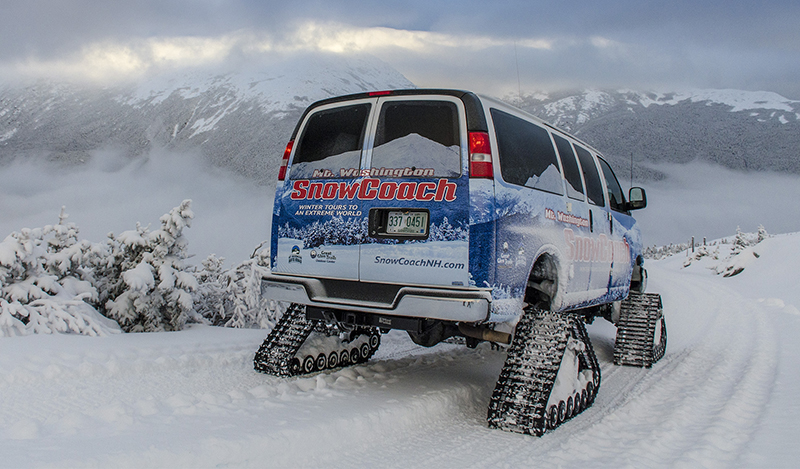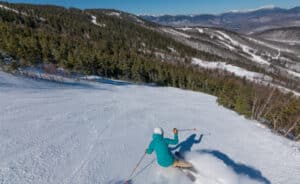
Mount Washington regularly earns its tagline as home of the world’s worst weather. On any given day, at any time of year, the 6,288-foot summit might be buffeted by snow or rain or sleet. Winds reach hurricane velocity nearly a third of the days in each year. It can snow in July, and ice is a regular fact of life here.
The weather was remarkably calm, however, the day I arrived at the Great Glen Trails Visitor Center at the base of the Mount Washington Auto Road for a Snow-Coach tour. The sky was a deep, vivid blue against the bright snow-white summits of Mount Adams, Jefferson and Madison. The temperature hovered around zero degrees, and there was nary a breeze.
It was lovely — unless you’re one of those people who come to Mount Washington to experience its infamous weather, eschewing sunshine for wild winds, swirling clouds and wintery precipitation.
“Weather-related events are what bring people to the mountain,” said Mike Micucci, who has driven tours on the Auto Road — both summer and winter — since he graduated from college a few decades ago. “When the weather is a little bit more interesting, people really, truly have an appreciation for how wild that mountain can be.”



